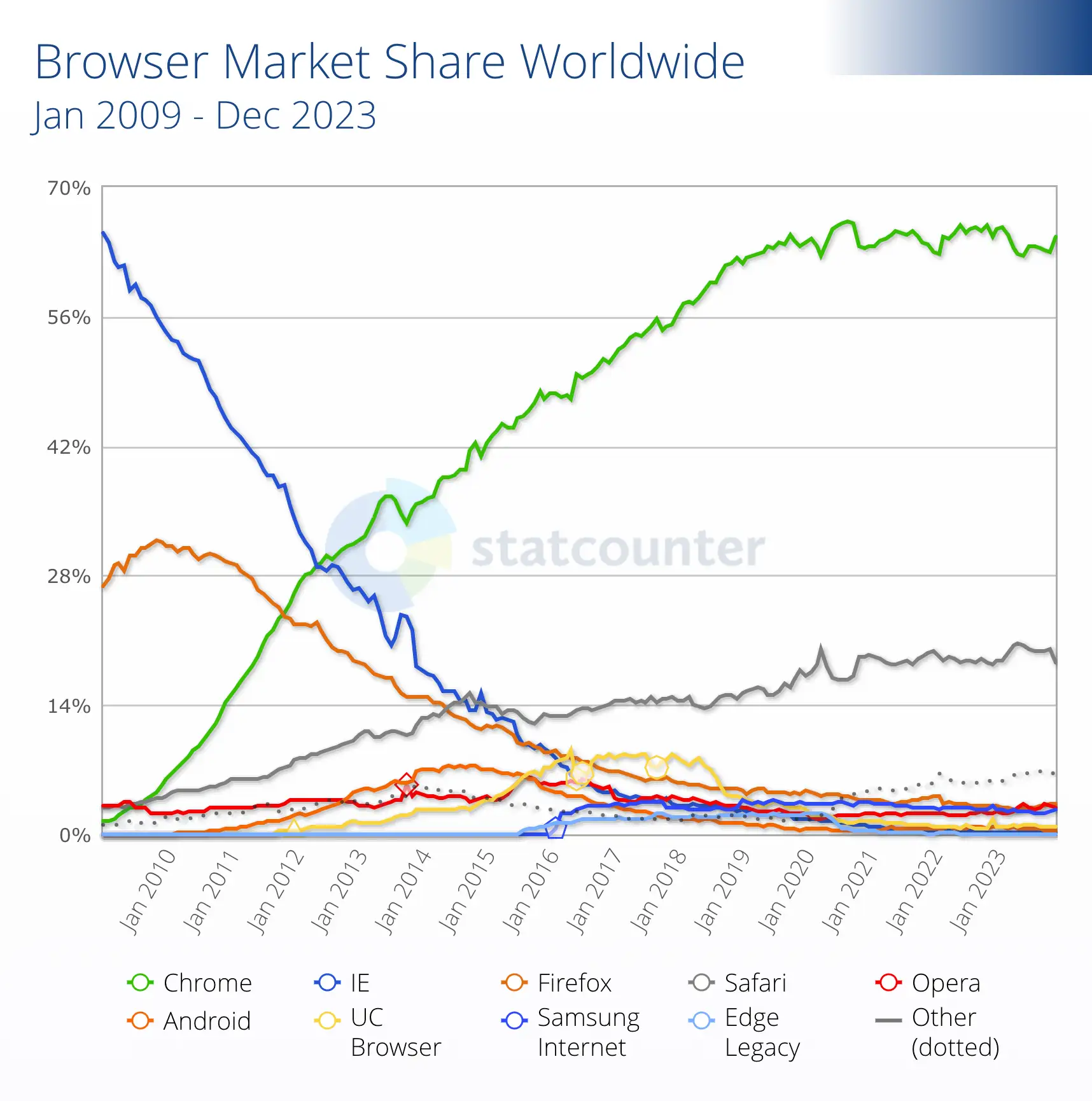Table of contents
- The Current Landscape of Online Privacy and Tracking
- Google’s Privacy Sandbox Initiative
- The Demise of Third-Party Cookies in Chrome
- Understanding Tracking Protection
- Impact on the Digital Advertising Industry
- Implications for Web Users
- Preparing for a Post-Cookie Internet
- Looking Ahead: The Future of Web Privacy
- Conclusion: Embracing the Change
The Current Landscape of Online Privacy and Tracking
![]()
The Role and Impact of Third-Party Cookies
For nearly three decades, third-party cookies have played a fundamental role in the web ecosystem. They have been used to track website activities and support various online experiences, such as logging in and displaying relevant ads.
However, concerns about privacy and data tracking have been growing. Users are becoming more aware of the information collected about them and are demanding more control over their data.
Previous Attempts to Enhance Privacy on the Web
Efforts have been made in the past to address privacy concerns, but they have not been sufficient. It is clear that a more comprehensive solution is needed to protect user privacy while still allowing businesses to thrive.
Google’s Privacy Sandbox Initiative

Google’s Privacy Sandbox is an initiative aimed at developing new tools and technologies to enhance privacy on the web. It is a collaborative effort involving various stakeholders to find a balance between privacy and the needs of businesses.
Key Features and Tools of the Privacy Sandbox
The Privacy Sandbox includes a range of features and tools that aim to provide alternatives to third-party cookies. These include APIs for ad targeting, conversion measurement, and fraud detection.
Timeline and Implementation of the Privacy Sandbox
The Privacy Sandbox is being implemented in stages, with the goal of phasing out third-party cookies by the second half of 2024. This timeline allows developers and businesses to adapt to the changes gradually.
The Demise of Third-Party Cookie Tracking in Chrome

Source: Statcounter.com
Google’s Announcement and the 2024 Deadline
In January 2024, Google announced its plan to phase out cookie tracking in chrome web browser for third-parties. This decision marks a significant shift in the online advertising industry and has far-reaching implications for website developers and marketers.
Testing Tracking Protection in Chrome
As part of the transition, Google is testing Tracking Protection, a feature that limits cross-site tracking by default. This feature will be rolled out gradually to Chrome users, allowing developers to test their readiness for a web without third-party cookies.
Implications for Users and Website Developers
For users, the demise of third-party cookies means enhanced privacy and control over their data. However, it may also lead to changes in the web browsing experience, as some sites may require adjustments to function properly without third-party cookies.
Understanding Tracking Protection
![]()
How Tracking Protection Works
Tracking Protection restricts third-party cookies by default, limiting the ability to track users across different websites. This helps protect user privacy and prevent unauthorized data collection.
User Experience with Tracking Protection
Users will notice that third-party cookies are restricted while browsing the web. However, if a site requires third-party cookies to function properly, Chrome will provide an option to temporarily re-enable them for that specific site.
Handling Sites That Require Third-Party Cookies
Chrome aims to strike a balance between privacy and functionality. If a site doesn’t work without third-party cookies and users experience issues, Chrome will provide a temporary solution to ensure a seamless browsing experience.
Impact on the Digital Advertising Industry

Challenges for Advertisers and Marketers
The demise of third-party cookies presents challenges for advertisers and marketers who rely on them for ad targeting and measurement. They will need to explore alternative methods and technologies to reach their target audience effectively.
Alternatives to Third-Party Cookies for Ad Targeting
Various alternatives to third-party cookies are being explored, such as first-party data, contextual targeting, and cohort-based targeting. These methods aim to provide advertisers with valuable insights while respecting user privacy.
The Future of Personalized Advertising
Personalized advertising will continue to evolve, even without third-party cookies. Advertisers will need to adapt their strategies and leverage new technologies to deliver relevant and engaging ads to users.
Implications for Web Users

Enhanced Privacy and Control Over Data
The demise of third-party cookies means that users will have greater privacy and control over their data. They can browse the web with more confidence, knowing that their activities are not being extensively tracked.
Potential Changes in Web Browsing Experience
While the transition away from third-party cookies aims to be seamless, some websites may require adjustments to function properly. Users may experience minor changes in their web browsing experience as a result.
How Users Can Prepare for a Cookie-less Web
Users can prepare for a cookie-less web by staying informed about the changes and understanding the implications. They can also explore privacy-focused browser extensions and tools to enhance their online privacy.
Preparing for the Post-Cookie Internet

Steps for Businesses to Adapt to the Changes
Businesses should start preparing for a post-cookie internet by exploring alternative methods for ad targeting and measurement. They should also prioritize building strong relationships with their audience based on trust and transparency.
Tools and Resources for a Smooth Transition
Various tools and resources are available to help businesses navigate the transition away from third-party cookies. These include privacy-focused analytics platforms, consent management solutions, and industry guidelines.
Best Practices for Maintaining User Trust and Engagement
Businesses should prioritize user trust and engagement by being transparent about data collection and usage. They should also provide users with clear options to control their privacy settings and respect their preferences.
Looking Ahead: The Future of Web Privacy

Emerging Technologies and Standards for Privacy
The demise of third-party cookies is just one step toward a more private web. Emerging technologies and standards, such as federated learning and differential privacy, will continue to shape the future of web privacy.
Regulatory Landscape and Its Influence on Privacy Practices
Regulations, such as the General Data Protection Regulation (GDPR) and the California Consumer Privacy Act (CCPA), have already had a significant impact on privacy practices. It is likely that more regulations will be introduced to further protect user privacy.
Long-Term Vision for a More Private Web
The long-term vision is to create a web that is more private, secure, and user-centric. This requires collaboration between technology companies, regulators, and users to establish a balance between privacy and the needs of businesses.
Conclusion: Embracing the Change

Summary of Google’s Move Away from Cookie Tracking
Google’s decision to phase out third-party cookies in Chrome marks a significant shift in the online advertising industry. It reflects the growing demand for privacy and user control over data.
What This Means for the Average Internet User
For the average internet user, this change means enhanced privacy and control over their online activities. They can browse the web with more confidence, knowing that their data is being protected.
The Broader Implications for the Internet Ecosystem
The demise of third-party cookies has broader implications for the internet ecosystem. It will require businesses, advertisers, and developers to adapt their strategies and embrace new technologies to thrive in a post-cookie world.





